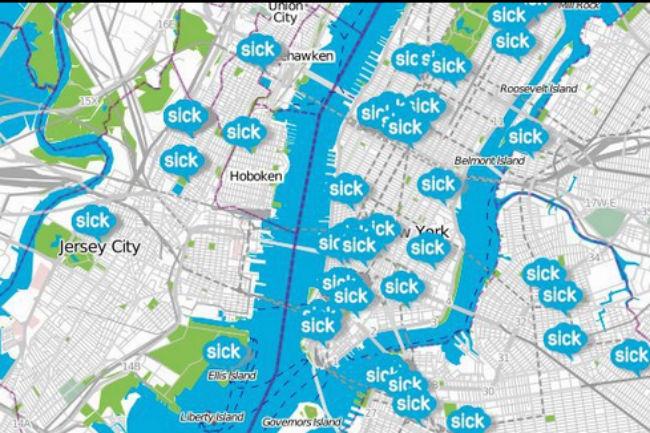
Despite sniffling co-workers and commutes spent dodging sneezes on public transit, staying healthy is no easy feat, especially in the winter. A new iOS app called SickWeather wants to make your quest to avoid sickness this cold-and-flu season a little easier by plotting out areas where the sickies are, providing a real-time map of places to avoid.
SickWeather trawls Facebook and Twitter for posts about illness, using an algorithm to sort relevant posts (“My flu is getting worse, I was up all night vomiting”) from the irrelevant (“R. Kelly makes me want to vomit.”) You can select the illness you’re most concerned with catching from a list of options, from pink eye to the whooping cough. Using a patent-pending search method, the app pulls up areas with reported illnesses, color-coding them according to how recently someone posted about being sick. The app also sends alerts to users who enter into an area with a known illness.
If you’re an Android user, you can still take advantage of SickWeather by heading to the website or using its Facebook app. Both ways of accessing SickWeather allow you to see which areas have reported instances of sickness, although it becomes impossible to avoid potential illness if you try to avoid the areas colored in orange that represent where “symptom activity” occurs – for the flu and allergies, Toronto appeared blanketed. If you zoom in far enough, the orange shading that shows the areas where these illnesses have been reported gets replaced by pins showing the individual reports.
SickWeather probably isn’t the best app for people with hypochondriac tendencies, but if you want to know areas of your city to avoid (or places you should definitely apply hand sanitizer after visiting) it’s a helpful service, and it highlights how social media can serve as an important data source for health and safety tools.


